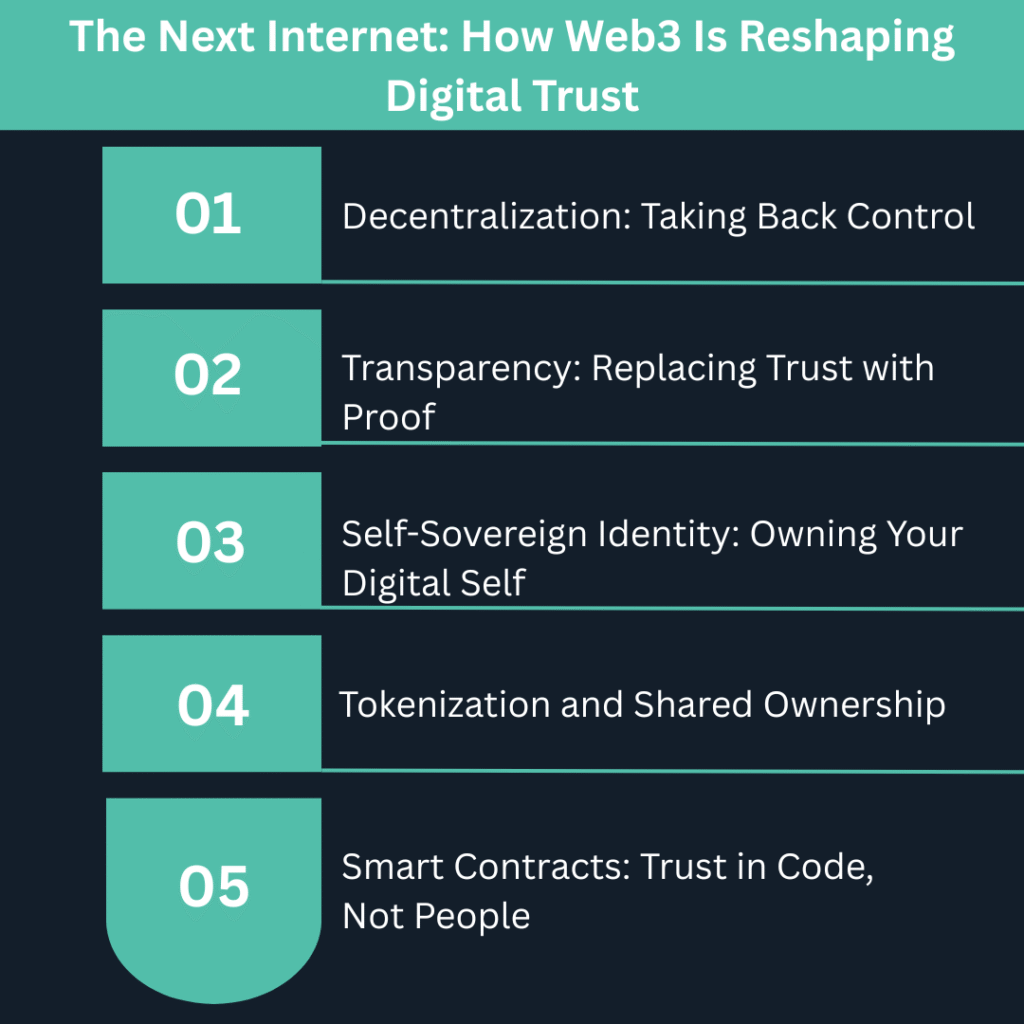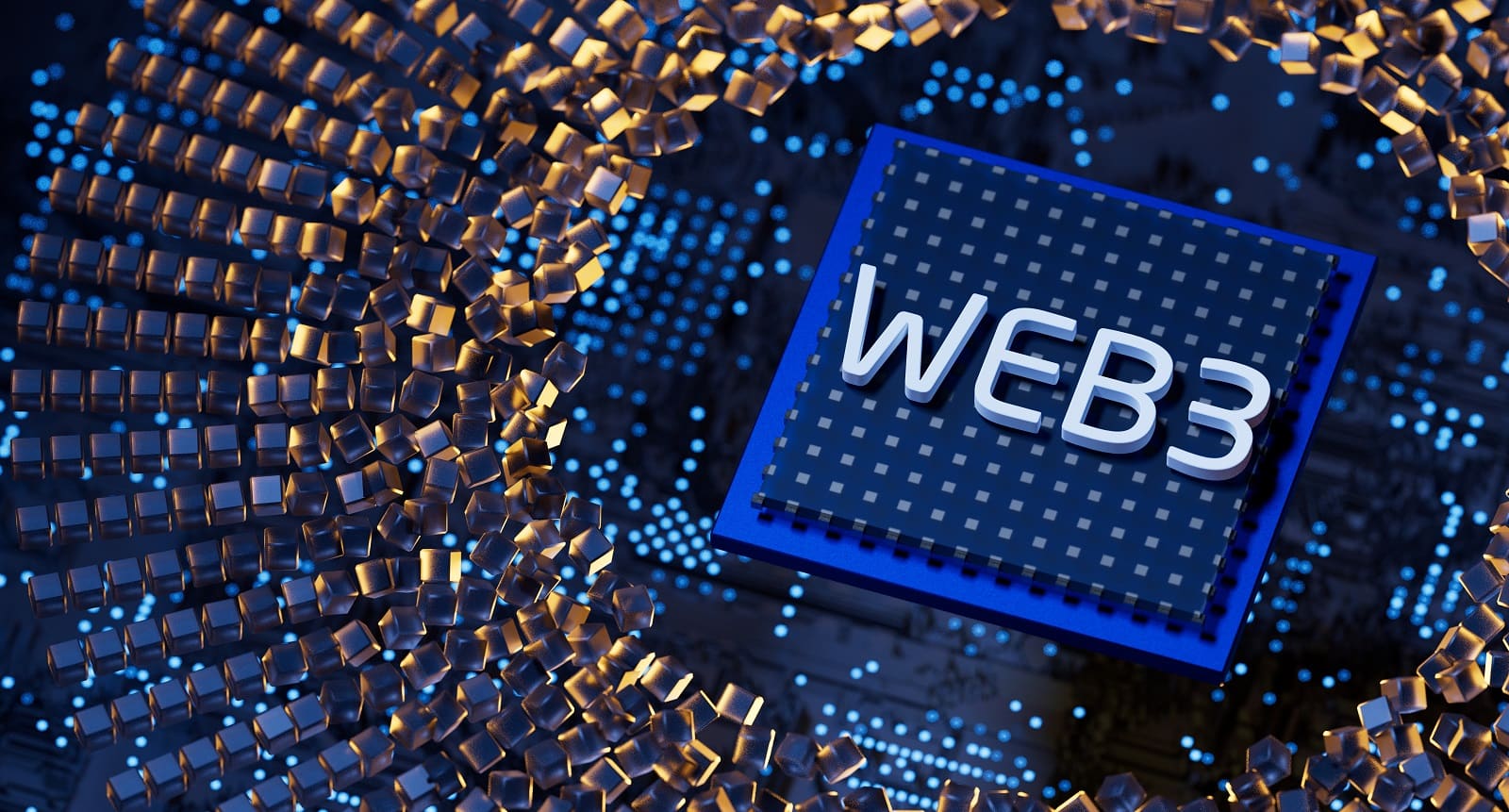The internet has always relied on one invisible force trust.
Every time you buy something online, share your personal data, or log in to a social platform, you’re placing trust in someone a company, an app, or a system.But that trust is starting to crack.
Data breaches, fake news, privacy scandals, and centralized control have made people question everything.
Who really owns our data? Who profits from it? And who can we actually trust online?
This is where Web3 steps in not as a buzzword, but as a transformation.
Web3 is often called the next internet because it changes how people connect, own, and build online. Powered by blockchain, decentralization, and digital ownership, it puts users not corporations at the center.
Most importantly, Web3 redefines what trust means.
In Web2, we trusted people and platforms.
In Web3, we trust technology transparency, code, and consensus.
You can also read: Best Free Tools for Digital Marketing in 2025
Let’s explore how Web3 is rebuilding digital trust, what challenges it faces, and how we can help shape a more secure, fair, and empowering digital future.

Decentralization
In the current Web2 world, most of our data lives on centralized servers owned by big corporations. They decide who can access it, how it’s used, and how long it’s kept.
Web3 flips that model completely.
Through decentralization, data is stored across a network not controlled by one company. There’s no single gatekeeper, no monopoly over your information, and no single point of failure.
This shift gives individuals true ownership of their digital identity and data. You decide how, when, and with whom to share it.
That’s real digital freedom.
Decentralization builds trust because power is shared, not owned.
Transparency
In Web3, transparency isn’t a promise it’s a built in feature.
Everything that happens on a blockchain is open, verifiable, and permanent. You don’t have to take someone’s word for it you can check for yourself.
This changes how accountability works online.
Instead of trusting companies to “do the right thing,” users can see what’s really happening behind the scenes.
That’s why Web3 is often called a trustless system not because it lacks trust, but because trust is embedded in the technology itself.
Self-Sovereign Identity
Right now, our online identities are scattered across dozens of apps and platforms. Every time we sign up somewhere new, we give away more personal data emails, numbers, documents without knowing who’s using it or how.
Web3 introduces something called Self Sovereign Identity (SSI) a way for you to control your own digital identity.
Instead of relying on platforms, you hold your verified credentials in a secure digital wallet. You share only what’s necessary, and only when you choose to.
It’s a privacy first, user driven internet, where your data truly belongs to you.
That’s how trust is restored when ownership returns to the individual.
Tokenization and Shared Ownership
Web3 also brings tokenization, a system that represents value or ownership digitally.
But tokens aren’t just about money they’re about participation.
They give people and communities the power to collaborate, vote, and share in the growth of the ecosystem.
This turns passive users into active owners.
It encourages transparency, fairness, and shared responsibility the foundation of long term trust.
When users have a stake in something, they protect it.
That’s how trust becomes sustainable.
Smart Contracts
Traditional systems depend on middlemen banks, lawyers, or brokers to ensure fairness.
Web3 replaces that with smart contracts.
Smart contracts are pieces of code that automatically execute agreements when conditions are met. No delays, no human bias, and no room for manipulation.
It makes transactions faster, safer, and more reliable.
Trust isn’t something we hope for anymore it’s built directly into the system.
By putting fairness into code, Web3 removes friction and creates a digital world that’s transparent, efficient, and self governing.
How to Fix
While Web3 has incredible potential, it’s still evolving.
To make it trustworthy and accessible for everyone, a few things need to improve:
1. Simplify the Experience
Most people still find blockchain complicated. Web3 needs to feel as easy and intuitive as any other app we use today. Simple design and clear onboarding are key for mass adoption.
2. Strengthen Security and Regulation
Hacks and scams erode public confidence. Web3 must build stronger security standards and smart, balanced regulations that protect users without slowing innovation.
3. Improve Interoperability
Users should be able to move smoothly between different blockchains, wallets, and apps. A connected Web3 will make ownership and identity universal, not fragmented.
4. Educate the Public
Knowledge is the foundation of digital trust. People need to understand how wallets, tokens, and privacy keys work. Awareness leads to confidence and confidence leads to adoption.
5. Design Ethical Incentives
Web3 economies should reward transparency, contribution, and long term value not quick profits.
When incentives align with honesty, trust naturally follows.
Conclusion
Web3 isn’t just another tech upgrade it’s a mindset shift.
It changes how we think about trust, ownership, and community online.
Instead of asking users to believe in a brand, Web3 gives them proof.
Instead of relying on a few centralized giants, it empowers millions of people to create, own, and collaborate freely.
Web3 doesn’t replace human trust it enhances it.
It gives us the tools to build an internet that’s fairer, safer, and more open for everyone.
As we step into this new era, one truth stands out clearly:
The future of digital trust won’t be promised it’ll be built in code.
FAQs
What is Web3 and how is it different from Web2?
Web3 is the next stage of the internet, powered by blockchain and decentralization. Unlike Web2, it gives users control over their data, identity, and assets.
How does Web3 build trust online?
It builds trust through transparency, blockchain verification, and smart contracts that enforce fairness automatically.
What are the biggest challenges Web3 faces?
The main issues are usability, lack of regulation, limited awareness, and the need for stronger security systems.
Can businesses benefit from Web3?
Absolutely. Web3 allows businesses to operate transparently, build community ownership, and manage data securely strengthening customer loyalty and brand credibility.
Is Web3 really the future of the internet?
Yes it’s not replacing the internet we know, but evolving it. Web3 is the foundation for a more secure, open, and user centric digital world

